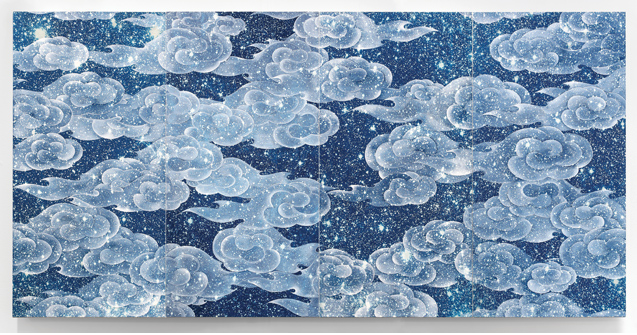
Ala Ebtekar’s Zenith V at Long, Winding Journeys: Contemporary Art and the Islamic Tradition. Photo: Katonah Museum of Art

Ala Ebtekar’s Zenith V at Long, Winding Journeys: Contemporary Art and the Islamic Tradition. Photo: Katonah Museum of Art
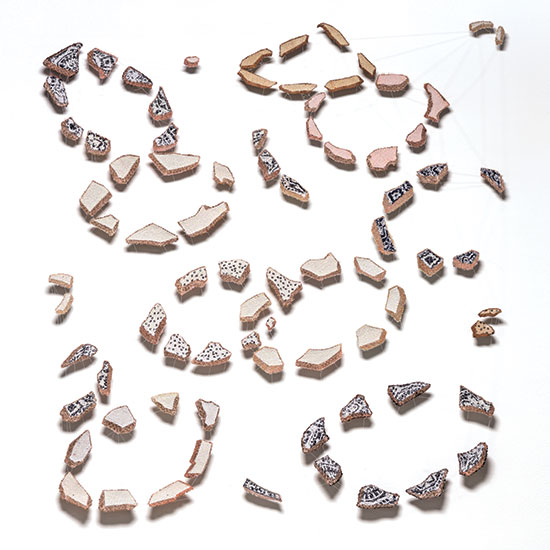
30mb Dutch Blue (Oval), Marian Bijlenga
camelhair, fabric, stitched
35” x 35”, 2006, photo by Tom Grotta
For this year’s Art in the Barn exhibition, we asked artists to enter a blue or green period of their own and send us a work that conveyed one of the many meanings, connotations and moods of these colors. The result is Blue/Green: color/code/context, an exhibition of remarkably diverse works from more than 50 artists from 15 countries. Marian Bijlenga of the Netherlands, for example, has created an enigmatic wall work inspired by Dutch blue china fragments. The work is inspired, she says, by the patterns of Chinese porcelain and the Japanese philosophy of the reuse of broken tiles and her collection of Dutch blue shards, collected in Amsterdam.
Yasuhisa Kohyama has created, Kaze, a ceramic with a grey-greenish cast, hand built and wood fired in an anagama kiln. “With the properties of the shigaraki clay and its inclusions of feldspar and silica, the high heat, the atmosphere in the kiln and the falling of the wood ash on the pots all present, warm colors as well as attractive markings can be captured on the surface of the clay,” Kohyama explains. “The blue-green and red-orange colors develop in the mid-section of the kiln; In the back of the kiln, a heavily reduced atmosphere creates rich dark gray and brown colors.”
The Green Horizon is the striking abstract tapestry created by Gudrun Pager of Denmark for the exhibition. “Perhaps it is the horizon between heaven and sea, or between heaven and earth – or the line between heaven and earth?” Pagter muses. “The thin, horizontal line is made with many shades of blue and green thin linen. The main color is blue, but the thin, green horizon is essential to the whole picture.”
Encylopedia Britanica pages are the material Wendy Wahl uses to express our station in time, recognizable as they are as a part of a particular collective consciousness. Wahl’s Changing Tides is made of 275 pages of the 1988 Encyclopedia Britannica Annual of World Data, the only book in Wahl’s collection of EB volumes that contained blue paper. The pages were cut into seven sections, for each of the continents, contemplatively scrolled and compressed into 1925 whorls to symbolize the reality of rising water around the globe. These four are just a sampling of the more than 70 works that will be on display in the Blue/Green: color/code/context exhibition and in the companion catalog, which will be available at www.browngrotta.com after April 28th. To visit Blue/Green: color/code/context, here are the details: Saturday, April 28th, 1-6 pm: Opening and Artists Reception

Norma Minkowitz’s Excavation in the foreground, Carolina Yrarrázaval’s tapestries in the background.
Last Friday, the Westport Arts Center opened up its new exhibition, Handmade: Women Reshaping Contemporary Art, which includes three artists, Chiyoko Tanaka, Carolina Yrarrázaval and Norma Minkowitz, represented by browngrotta arts. The exhibition was curated by Elizabeth Gorayeb, the Executive Director of the Wildenstein Plattner Institute, Inc., a New York based non-profit committed to art historical research. Handmade also features work by Ghada Amer, Anna Betbeze, Ligia Bouton, Orly Cogan, Lesley Dill, Terri Friedman, Sermin Kardestuncer, Sophia Narrett, Faith Ringgold, Miriam Schapiro, Judith Scott, Beverly Semmes, Rosemarie Trockel and Margo Wolowiec, all of whom utilize fiber and textile in their art.
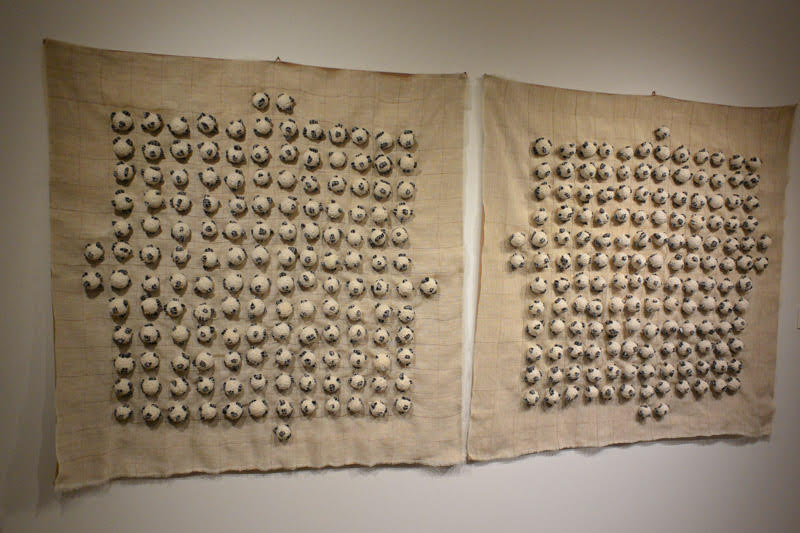
301 balls (Diptych), 2017
Cotton thread, coal from Soma, Turkey, fabric
36 × 37 in, 2017. Photo by Tom Grotta
“As visitors to a gallery or museum, we are expected to engage with works of art though the act of looking. We consider the final product of the artist’s creation, but rarely do we think of the tactile experience of the artist’s process,” explains Gorayeb. “Fiber art — works of art created from wool, silk, cotton, flax and other forms of textiles — present us with a dynamic, multi-sensory experience.” It is because of this tactile experience and physical commitment that Narrett prefers embroidery over painting, “when an object is developed by human hands for hundreds of hours, it leaves a quality in the surface that can be sensed,” she notes.
We lost two fine artists and friends this month when Ethel Stein passed away at 100 and Katherine Westphal died at home in Berkeley, California at 99.
Six years later, Ethel’s work received the wider recognition it deserved. We were thrilled to attend the opening of her one-person exhibition, Ethel Stein, Master Weaver, at the Art Institute of Chicago in 2014. “Ethel Stein is an artist who only now, at the age of 96, is beginning to get the recognition she deserves from the broader public,” the Institute wrote. “Stein’s great contribution to weaving is her unique combination of refined traditional weaving techniques, possible only on a drawloom and used by few contemporary weavers, with modernist sensibilities influenced by Josef Albers, who trained in the German Bauhaus with its emphasis on simplicity, order, functionality, and modesty.” There were photos of her at work, a video and a dinner after with family members and supporters of the museum and crowds of visitors to the exhibition — a well-deserved tribute.
These artists and their lengthy careers, raise the question, is fiber art a key to longevity? Ethel Stein continued to weave even after she was discovered and lauded at 96. When we visited Katherine Westphal in Berkeley in 2015 we found her still drawing or painting every day in a series of journals she kept, something she continued to do until just a few weeks before her death. Lenore Tawney died at 100, Ruth Asawa and Magdalena Abakanowicz each at 87. Helena Hernmarck tells us that she knows several fiber artists who are 100. So those of you who are practitioners — keep it up!
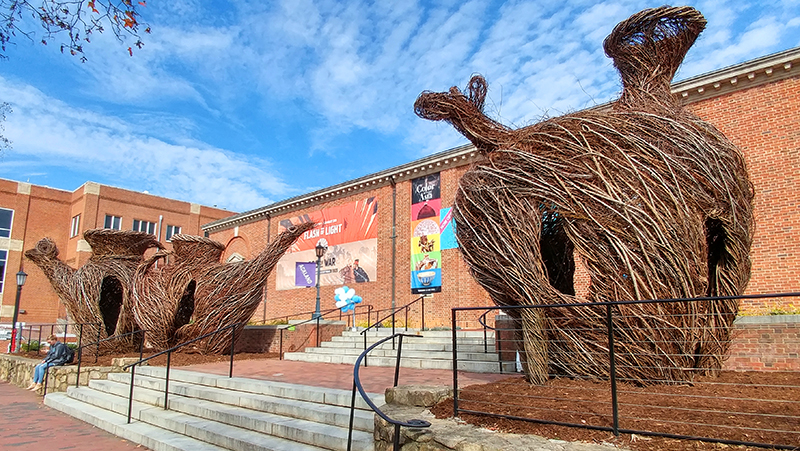 Raised in North Carolina and an alumnus of the University of North Carolina at Chapel Hill, sculptor Patrick Dougherty returned to his roots to create Step Right Up for the Ackland Art Museum last October. Internationally acclaimed for his monumental environmental works, Dougherty has produced over 280 large scale stick sculptures all over the world. You’ll know one of Dougherty’s sculptures when you see one. “Some cling to pylons or walls, or roll across the tops of trees; others emerge from a lake, seeming to balance on the surface of it without making a single ripple,” explains Daniel Wallace of Garden & Gun. “His sculptures do impossible things. They could be homes for giants or trolls, the first shelters built by prehistoric men, Gaudí-esque mazes, giant vines, remnants of alien visitations, windblown towers, jokes. They are fun, joyous, friendly, inviting, and public, very public: art conceived by one, built by many, shared by all.”
Raised in North Carolina and an alumnus of the University of North Carolina at Chapel Hill, sculptor Patrick Dougherty returned to his roots to create Step Right Up for the Ackland Art Museum last October. Internationally acclaimed for his monumental environmental works, Dougherty has produced over 280 large scale stick sculptures all over the world. You’ll know one of Dougherty’s sculptures when you see one. “Some cling to pylons or walls, or roll across the tops of trees; others emerge from a lake, seeming to balance on the surface of it without making a single ripple,” explains Daniel Wallace of Garden & Gun. “His sculptures do impossible things. They could be homes for giants or trolls, the first shelters built by prehistoric men, Gaudí-esque mazes, giant vines, remnants of alien visitations, windblown towers, jokes. They are fun, joyous, friendly, inviting, and public, very public: art conceived by one, built by many, shared by all.”
What separates Step Right Up from Dougherty’s other installations is that it is in his hometown of Chapel Hill, North Carolina. Dougherty earned his B.A. in English from the UNC in 1967 and later returned to study art history and sculpture. Before he began using sticks as his medium, Dougherty sculpted with clay. However, while using clay Dougherty was unable to achieve the scale he desired for his sculptures. While studying at UNC, Dougherty developed the idea of using sticks as his medium. Dougherty found that using sticks allowed him to bend and extend long lines, he could create his own monumental three-dimensional drawings. In order to effectively use sticks to create sculptures, Dougherty had to gain a better understanding of how shelter builders, such as birds and beavers, build their homes. “Sticks have an inherent method of joining…and that tangling allows you to hook them together,” Dougherty explains.
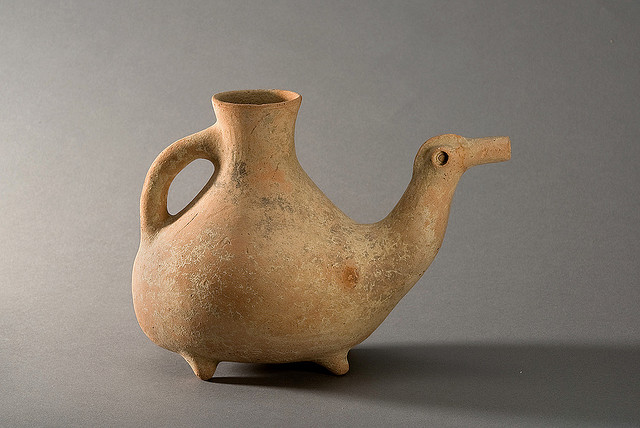
Unknown, Iranian, Caspian Region, ca. early 1st millennium B.C., Animal-shaped Pouring Vessel, earthenware, Overall: 8 3/4 x 12 x 6 3/16 in. (22.3 x 30.5 x 15.7 cm) Ackland Art Museum, University of North Carolina at Chapel Hill, Gift of Osborne and Gratia B. Hauge in honor of Dr. and Mrs. Sherman E. Lee, 91.21 © Ackland Art Museum, University of North Carolina at Chapel Hill
Dougherty often does not know what he is going to build until after he arrives at the installation site. Once he arrives, Dougherty has to source both volunteers and materials. For his exhibition Step Right Up at the Ackland Art Museum Dougherty was able to source his materials—maple and gum saplings—from Duke Forest and Triangle Land Conservancy, organizations Dougherty has had long relationships with throughout his career. Dougherty chooses to enlist the help of volunteers on his projects because he finds it interesting how varying types of characters can come together to create one piece. Dougherty’s creative process has three steps: 1) Structural formation—building the basic shape, 2) Appliqué—appliquéing a look onto the surface of the piece and 3) Cosmetic—fixing up and making it habitable for people to enjoy from both the inside and outside. In creating Step Right Up for the Ackland, Dougherty was inspired by the Ackland’s collection of ancient animal pouring vessels. The vessels, which usually have an animal head from which water is poured, typically have traditional tops. Dougherty liked the idea of having a mixed shape and applied it to his sculpture in Step Right Up.
“I think that part of my work’s allure is its impermanence, the life cycle that is built into the growth and decay of saplings,” explains Dougherty. “The line between trash and treasure is thin, and the sculptures, like the sticks they are made from, begin to fade after two years. Often the public imagines that a work of art should be made to last, but I believe that a sculpture, like a good flower bed, has its season.” Bounded to the installations organic material and outdoor setting, Dougherty’s Step Right Up is a temporary installation. The installation is expected to be on view through August 31, 2018 at the Ackland Art Museum in Chapel Hill, North Carolina. For more information, visit: https://ackland.org/exhibition/patrick-dougherty-stickwork-ackland/.
January 21 – May 6, 2018
Written languages are just one of the many ways human beings attempt to communicate with one another. In Text Message: Words and Letters in Contemporary Art, currently on exhibit at the Racine Art Museum in Wisconsin, contemporary artists, recognizing the power and complexity of the written word, utilize text—individual letters or words—to explore theoretical, social, symbolic, and aesthetic concerns.
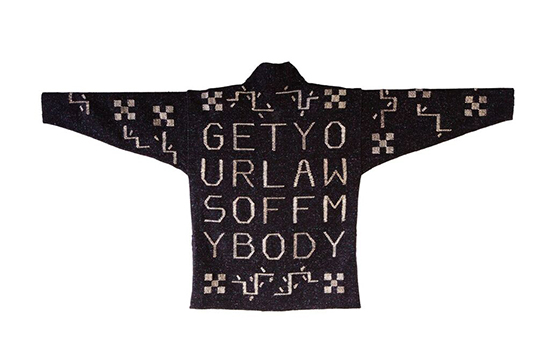
2 Laws, Barbara Brandel, Sampler (Jacket), 1995, dyed cotton, silk, and wool
Photo by Jon Bolton, Racine Art Musuem.
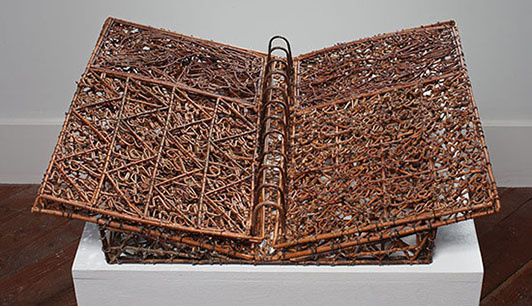
Bird Brain, John McQueen, woven willow twigs, waxed string, 2002, photo by Tom Grotta. On close inspection, the names of various birds are legible.
The exhibition includes works that use words, letters, and script to convey meaning. Tangible three-dimensional objects made of fiber, clay, polymer, paper, and metal along with two-dimensional works on paper underscore how contemporary artists recognize the power and complexity of the written word. John McQueen and Gyöngy Laky are among the 77 artists whose work is included. The exhibition ends on May 6, 2018. For more information, visit: https://www.ramart.org/content/text-message-words-and-letters-contemporary-craft. To pique your interest, here are some images of art by various artists who incorporate or reference text in their work.
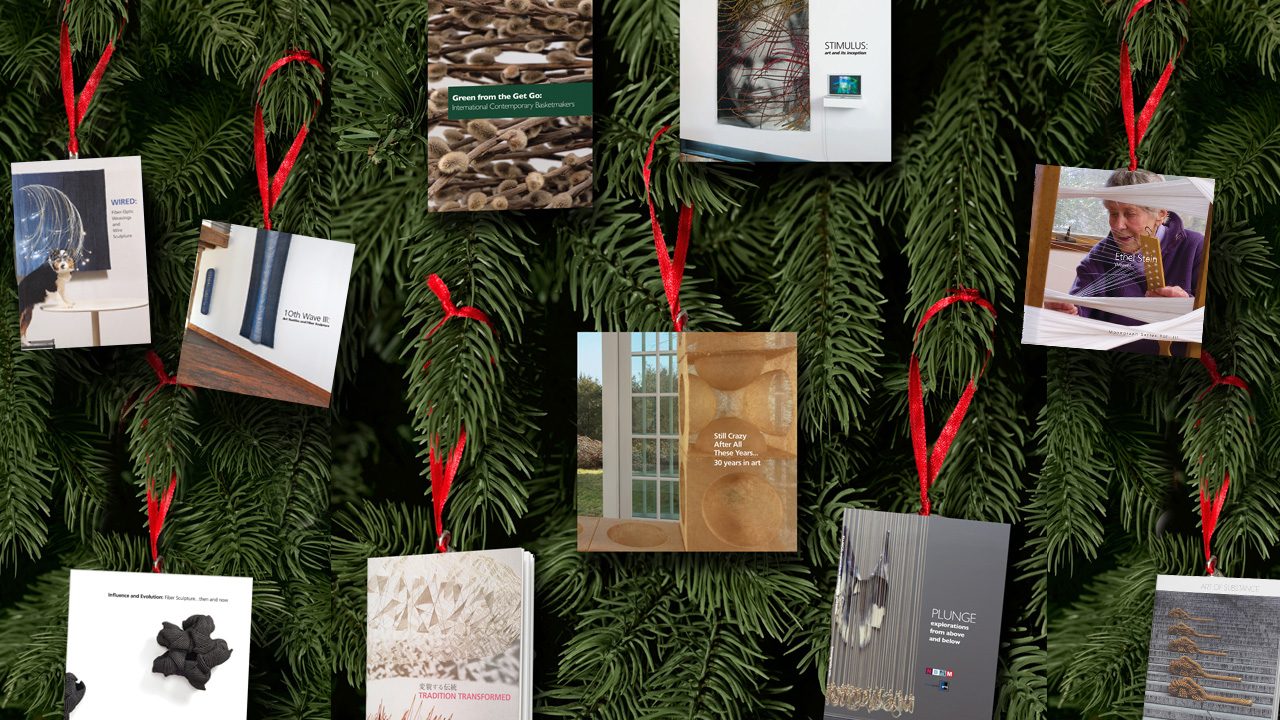
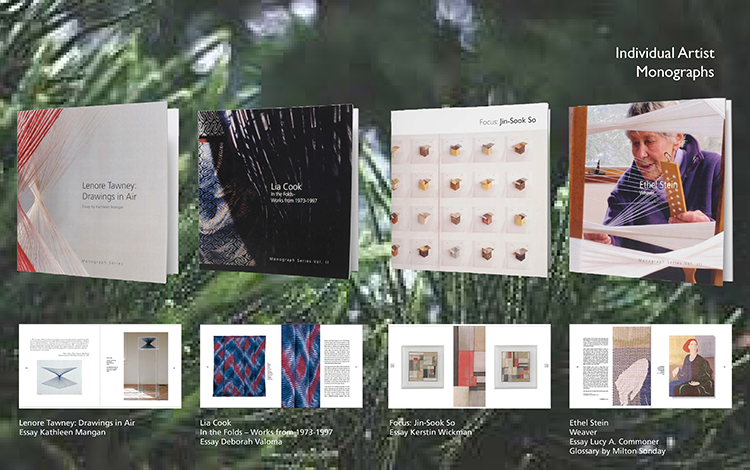
Art of interest can be found across the US and abroad this winter. Out West, Lia Cook and browngrotta art’s friend Carol Westfall are both featured in Coded Threads: Textiles and Technology in the Western Gallery at Western Washington University. The fourteen artists in the exhibition were chosen for their use of new textile technologies. Despite the fact that technology is changing lives and art rapidly, the earliest textile techniques are still practiced (basket weaving, indigo dying, etc.) The exhibition recognizes the importance of maintaining a connection to the past while seizing the opportunities that lie ahead with innovative textiles technology. Artists are now using spider silk, nanotechnology, biocouture, smart textiles (conductive threads, fiber optics) and Arduino microprocessors as materials for their work. The creation and use of these materials have fostered collaborative relationships between scientists, artist, and engineers. For example, Lia Cook works in collaboration with neuroscientists to investigate the natural response to woven faces by mapping the responses in the brain. She uses DSI (Diffusion Spectrum Imaging of the brain) and TrackVis software to view the structural neuronal connections between parts of the brain and then integrates the resulting “fiber tracks” with weaving materials to make up the woven translation of an image. Coded Threads: Textiles and Technology is on display in the Western Gallery at Western Washington University until December 8th. Do not miss the chance to glimpse at the future of textile art!
If you’re in the Midwest make sure to go see Flow: The Carved Paper Work of Jennifer Falck Linssen before it closes at the Talley Gallery in Bemidji, Minnesota on October 27th. “The impetus for Flow began one cold January week when Wisconsin artist Jennifer Falck Linssen escaped the frozen north for the lush green vegetation and mild temperatures of the Florida coast,” notes Laura Goliaszewski, the Talley’s Gallery Director. As Linssen was kayaking and hiking, she noticed the large population of birds making their new homes along the coast. Linssen began to consider how the diverse landscapes and climates of Florida and Wisconsin serve the seasonal needs of birds. A series of swooping, swerving wall sculptures that send viewers’ eyes aloft is the result.
Of Art and Craft, on display in the Flinn Gallery at the Greenwich Library, on the East Coast, explores the division between Art and Craft. The exhibition displays creations of glass, clay and fiber, which are all traditionally considered “craft materials.” However, the talent and skill present in all of the resulting pieces without a doubt make the pieces art, in the view of the exhibition’s curators. The exhibition features clay sculptures from Jocelyn Braxton Armstrong, Susan Eisen, and Phyllis Kudder Sullivan; glass work from Kathleen Mulcahy, Josh Simpson, and Adam Waimon; as well as fiber explorations by Emily Barletta, Ellen Schiffman and browngrotta arts artist Norma Minkowitz. Minkowitz, a resident of Westport, CT, has seven pieces featured in the exhibition, all of which use a variety of materials. Minkowitz’s piece in the exhibition Goodbye My Friend exemplifies her commitment to conveying the intimacy and imperfection of the human hand. “The interlacing technique that I use makes it possible for me to convey the fragile, the hidden, and the mysterious qualities of my work, in psychological statements that invite the viewer to interpret and contemplate my art,” explains Minkowtiz. Minkowitz is set to give a talk at the Flinn Gallery on November 5th at 2pm. Of Art and Craft will be on display at the Flinn Gallery from October 26th through December 6th.
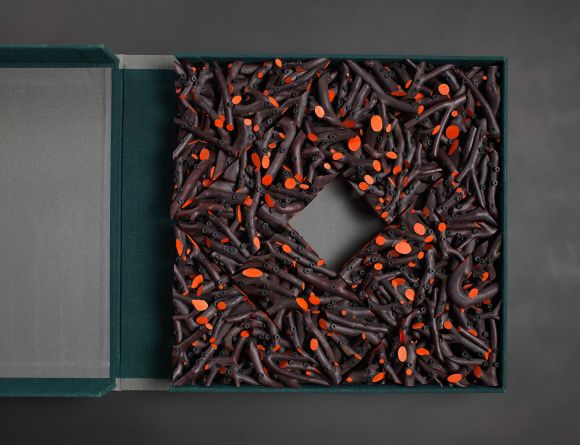
This Way and That, 2013, Gyöngy Laky. Cut and assembled manzanita wood painted with acrylic paint and secured with trim screws. Photo: Bruce M. White© Lloyd Cotsen, 2016
The Box Project: Uncommon Threads, which was previously at the Racine Art Museum, is currently on display in the Textile Museum at The George Washington University Museum. Art collector Lloyd Costen challenged 36 international fiber artist to create a piece of work in the parameters of an archival box. 10 browngrotta arts artist have work on display in The Box Project: Helena Hernmarck, Agenta Hobin, Kiyomi Iwata, Lewis Knauss, Naomi Kobayashi, Nancy Koenigsberg, Gyöngy Laky, Heidrun Schimmel, Hisako Sekijima and Sherri Smith. The exhibition will be on display at The George Washington University Museum through January 29th.
Out side the US, Essence Iki at the Dronninglund Kunstcenter in Denmark, celebrates 150 years of diplomatic cooperation between Japan and Denmark. Browngrotta arts artist Jane Balsgaard is one of six artists featured in the exhibtion, three from Denmark and three from Japan. Featured are objects, room dividers and Balsgaard’s majestic, airbound boats of paper. The exhibition will be on display at the Dronninglund Kunstcenter until December 11th
BBC Woman’s Hour Craft Prize nominee Laura Ellen Bacon also has a solo exhibition on display at the National Centre for Craft & Design in Sleaford, UK. The exhibition, titled Rooted in Instinct demonstrates the process Bacon goes through when crafting a new sculpture or installation while also displaying a variety of Bacon’s new thatching, weaving and knotting techniques. Once an old seed warehouse, The National Centre for Craft & Design is the largest venue in England entirely dedicated to the exhibition, celebration, support, and promotion of national and international contemporary craft and design. Rooted in Instinct will be on display until January 14th.
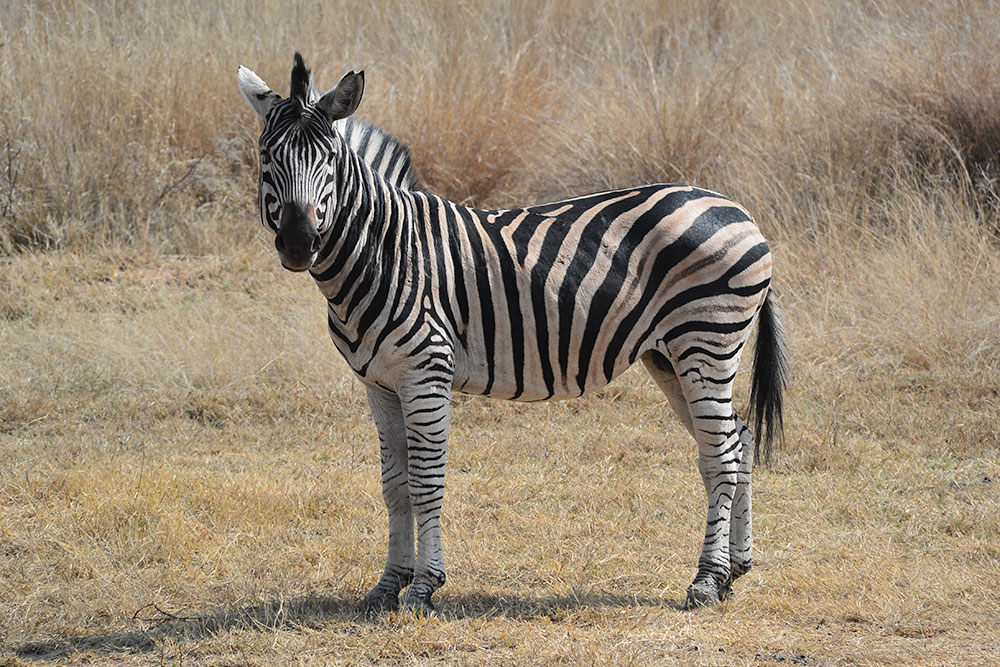
Zebra Pilanesburg Nature Reserve. Photo by
Tom Grotta
We had the opportunity to spend nine days in South Africa this month — Johannesburg, Capetown, Stellenbosch. A glorious country; a splendid trip and lots of art to write about. The big news, of course is the Zeitz Museum of Contemporary African Art.
https://www.afar.com/magazine/get-the-inside-scoop-on-cape-towns-new-zeitz-mocaa?category=overview&guide=21&email=art@browngrotta.com&utm_source=Sailthru&utm_medium=email&utm_campaign=Kindness of Strangers&utm_term=Daily Wander Newsletter
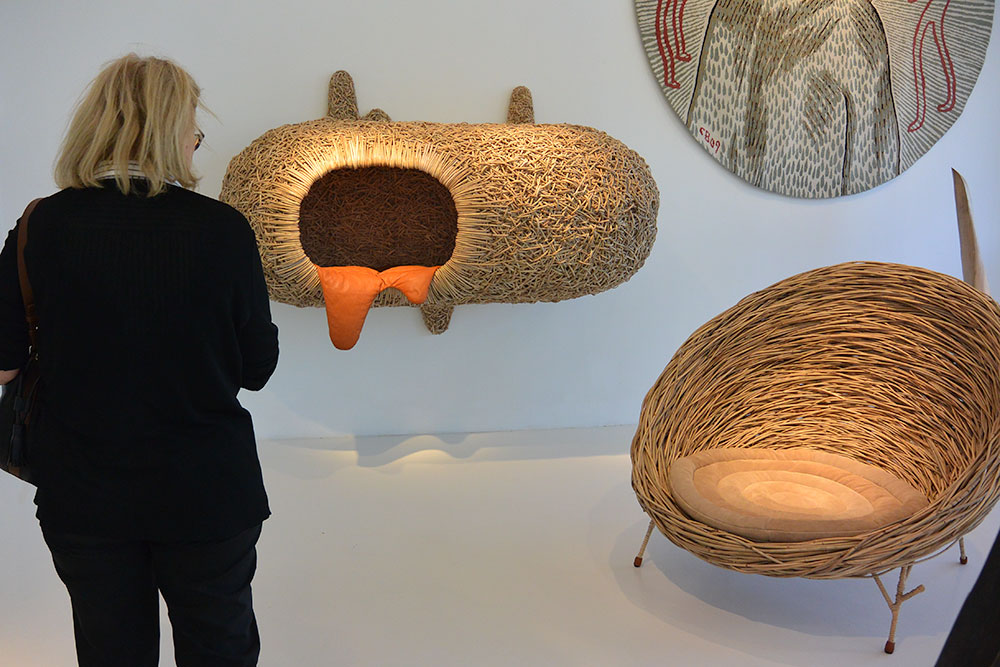
Porky Hefer’s Mud Dauber Sleeping Pod wall sculpture at the Southern Guild Gallery Cape Town, South Africa. Photo by Tom Grotta
We visited other galleries, including Kim Sacks in Jo’Burg, Kalk Bay Modern and Artvark, greatly appreciating Mark Hilltout’s works photo of woven metal and Yda Walt’s photo provocative appliques on our gallery tours.
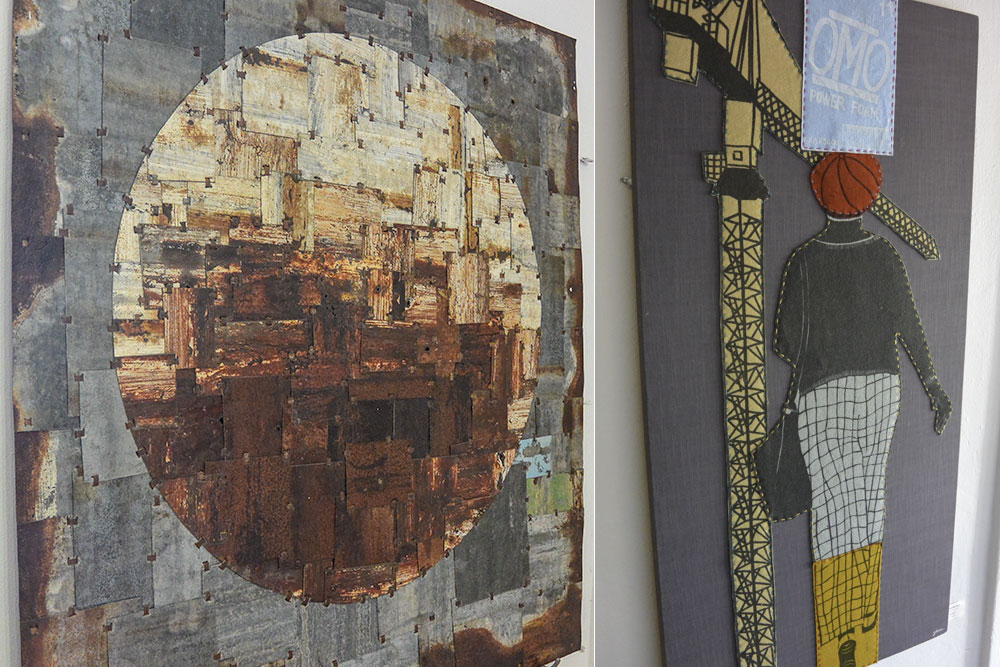
Mark Hilton Metal Work and Yda Walt appliqué quilts. Photos by Tom Grotta
William Kentridge, Said Mahmoud, Lyndi Sales and Mark Rautenbach were on display at restaurants and wineries we visited (Shortmarket Club, Tokara and Delaire Graff in these shots).
Just as captivating were the vibrant handicrafts — on the streets and in the shops in Woodstock and Bo-kaap and along the coast. The http://www.fodors.com/world/africa-and-middle-east/south-africa/cape-town-and-peninsula/experiences/news/art-lovers-guide-to-cape-town-12123 Simon’s town sculptures.
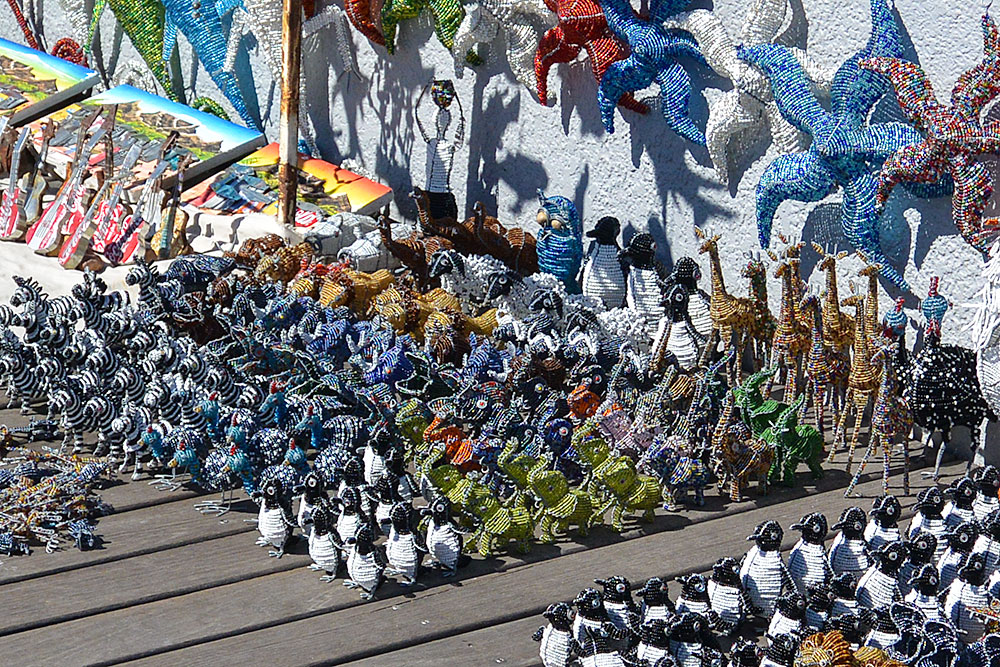
Simon’s Town Street bead art. Photo by Tom Grotta
A Nigerian embroidery and an antique rattle basket found their way into our suitcase home.
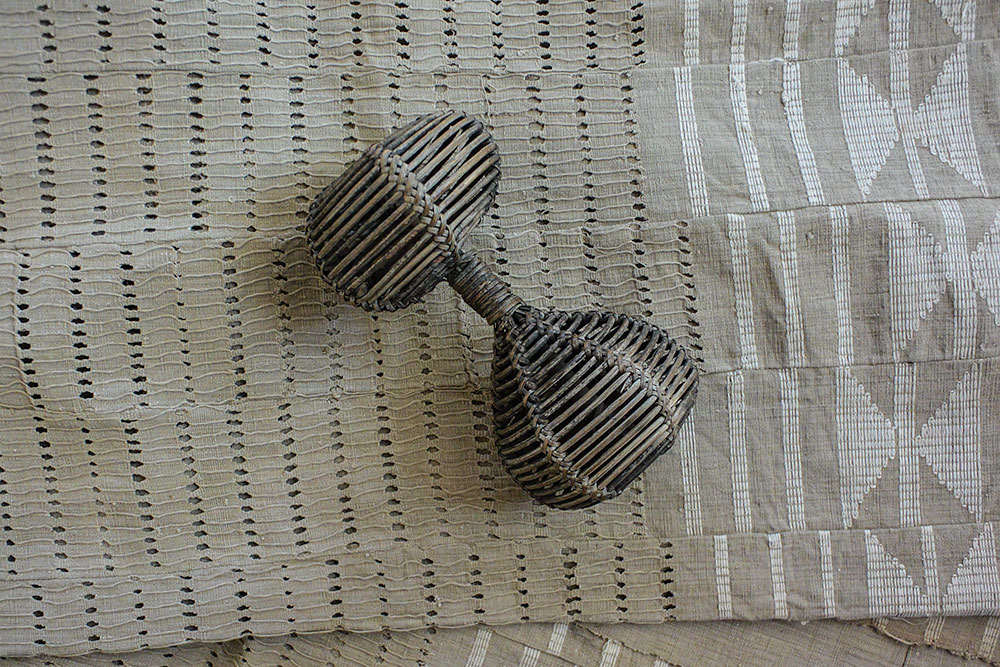
Nigerian Blanket and Rattle. Photo by Tom Grotta
Art and oogling and eating, aren’t all. The historical stops we made – the Apartheid Musuem, Robben Island, Nobel Square — were moving and insightful ways to urge people remember the past while forging a better future.
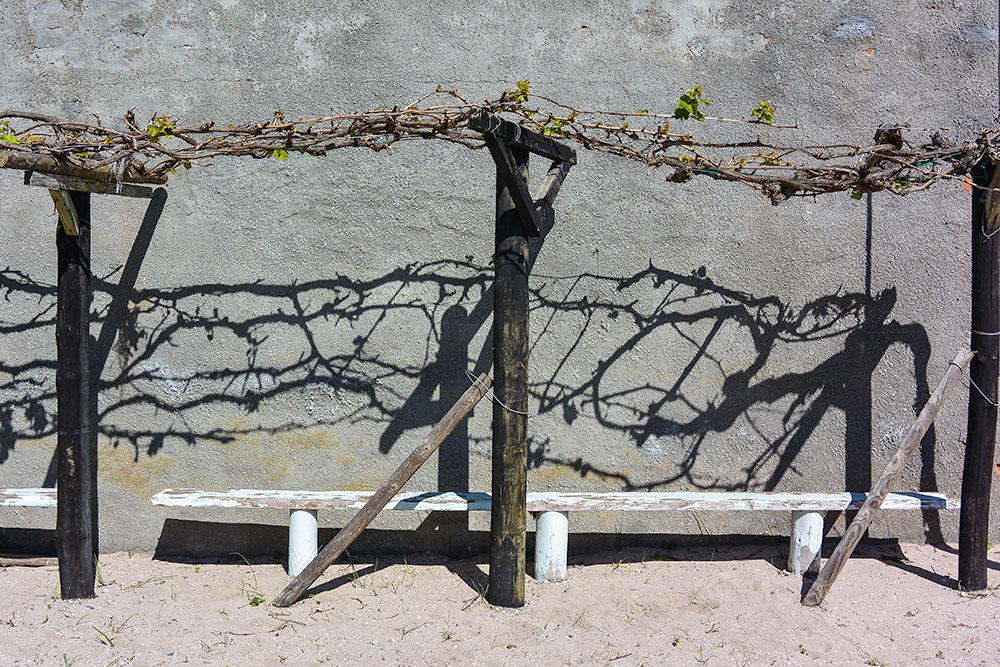
Nelson Mandella’s Garden in Robben Island Prison. Photo by Tom Grotta
If South Africa has been on your must- or even maybe-visit list, just go. The people are open and inviting, the wine and food world class and the natural beauty is nonstop.
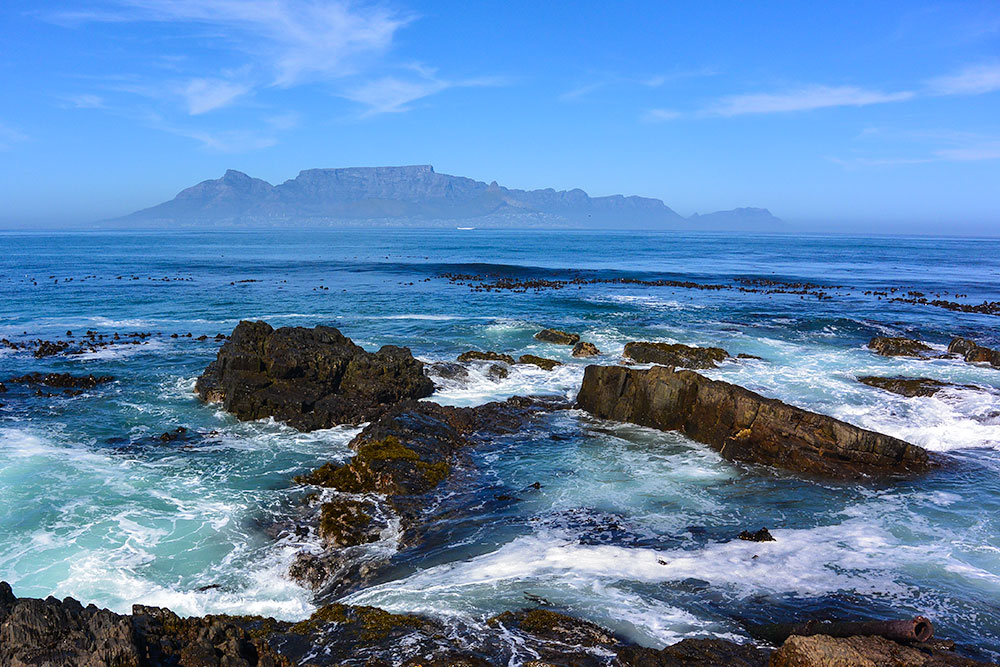
Table Mountain South Africa, View from Robben Island. Photo by Tom Grotta
Copyright © 2014-2025 arttextstyle | Powered by WordPress | Design by Iceable Themes
